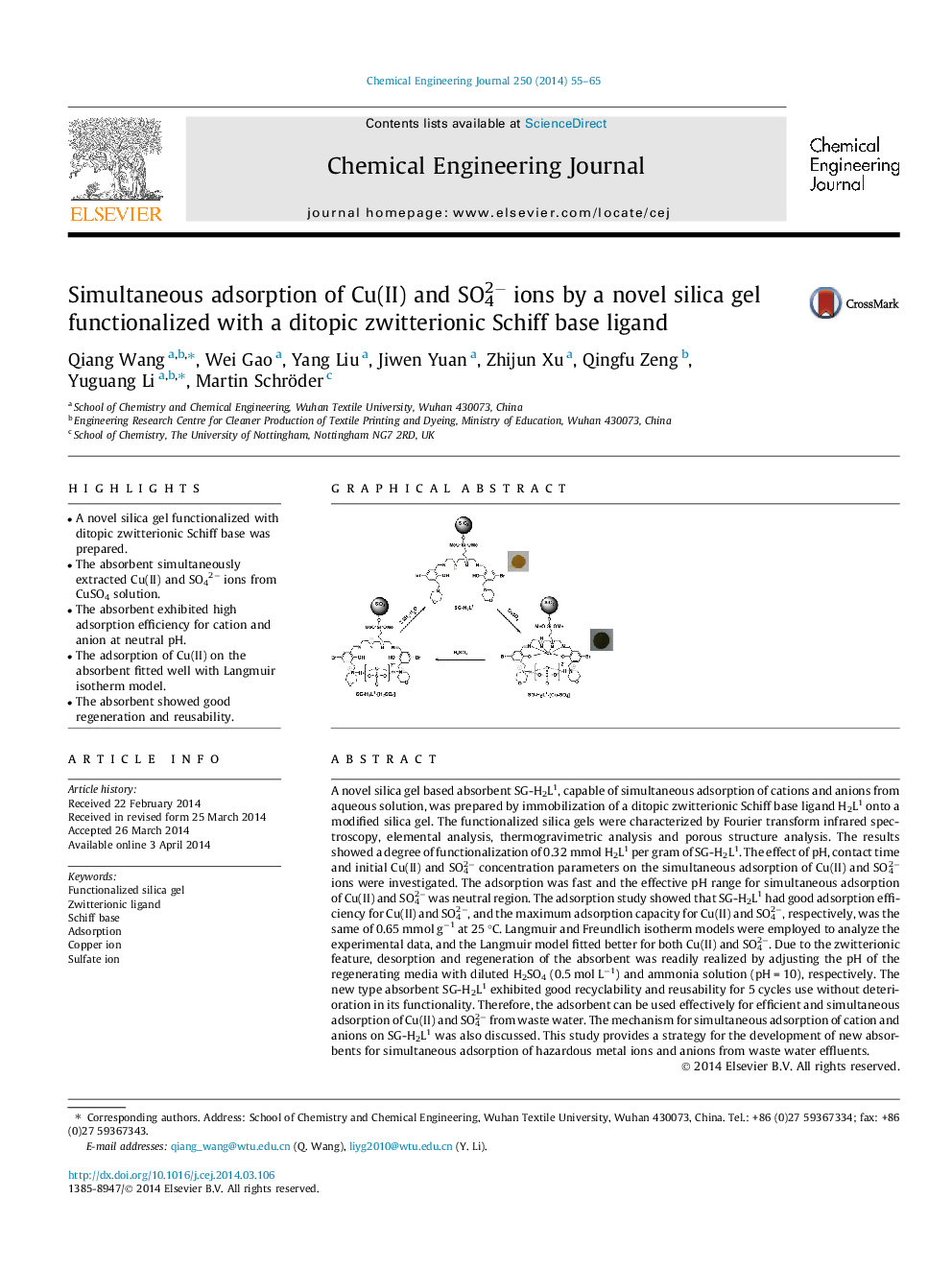| کد مقاله | کد نشریه | سال انتشار | مقاله انگلیسی | نسخه تمام متن |
|---|---|---|---|---|
| 147348 | 456390 | 2014 | 11 صفحه PDF | دانلود رایگان |

• A novel silica gel functionalized with ditopic zwitterionic Schiff base was prepared.
• The absorbent simultaneously extracted Cu(II) and SO42− ions from CuSO4 solution.
• The absorbent exhibited high adsorption efficiency for cation and anion at neutral pH.
• The adsorption of Cu(II) on the absorbent fitted well with Langmuir isotherm model.
• The absorbent showed good regeneration and reusability.
A novel silica gel based absorbent SG-H2L1, capable of simultaneous adsorption of cations and anions from aqueous solution, was prepared by immobilization of a ditopic zwitterionic Schiff base ligand H2L1 onto a modified silica gel. The functionalized silica gels were characterized by Fourier transform infrared spectroscopy, elemental analysis, thermogravimetric analysis and porous structure analysis. The results showed a degree of functionalization of 0.32 mmol H2L1 per gram of SG-H2L1. The effect of pH, contact time and initial Cu(II) and SO42− concentration parameters on the simultaneous adsorption of Cu(II) and SO42− ions were investigated. The adsorption was fast and the effective pH range for simultaneous adsorption of Cu(II) and SO42− was neutral region. The adsorption study showed that SG-H2L1 had good adsorption efficiency for Cu(II) and SO42−, and the maximum adsorption capacity for Cu(II) and SO42−, respectively, was the same of 0.65 mmol g−1 at 25 °C. Langmuir and Freundlich isotherm models were employed to analyze the experimental data, and the Langmuir model fitted better for both Cu(II) and SO42−. Due to the zwitterionic feature, desorption and regeneration of the absorbent was readily realized by adjusting the pH of the regenerating media with diluted H2SO4 (0.5 mol L−1) and ammonia solution (pH = 10), respectively. The new type absorbent SG-H2L1 exhibited good recyclability and reusability for 5 cycles use without deterioration in its functionality. Therefore, the adsorbent can be used effectively for efficient and simultaneous adsorption of Cu(II) and SO42− from waste water. The mechanism for simultaneous adsorption of cation and anions on SG-H2L1 was also discussed. This study provides a strategy for the development of new absorbents for simultaneous adsorption of hazardous metal ions and anions from waste water effluents.
Figure optionsDownload as PowerPoint slide
Journal: Chemical Engineering Journal - Volume 250, 15 August 2014, Pages 55–65